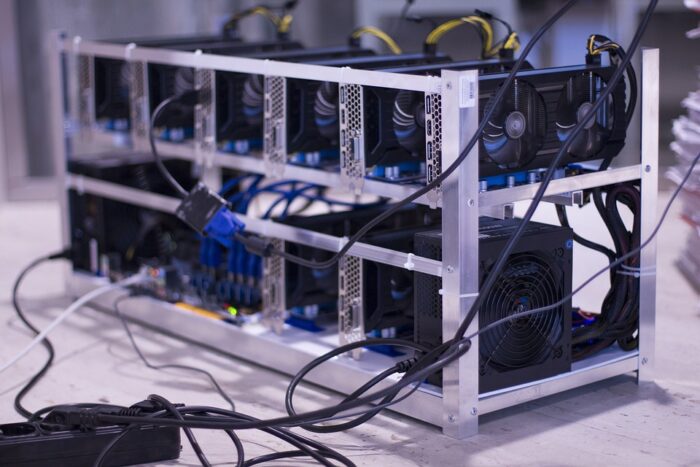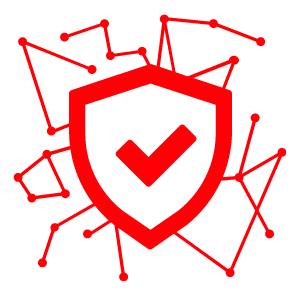What Is Blockchain In Simple Terms?
Blockchain technology is defined as a framework that keeps transactional records of the public referred to as “block” in several databases, which are referred to as “chain “in a network that connects through peer-to-peer nodes. The whole storage is now referred to as a digital ledger.
Every transaction stored in this ledger should be authorized by a digital signature held by the owner. This signature is required to authenticate each transaction and safeguard it from interference. When a new information block is added to it, it reduces the chances to modify the previous block, thus making each block more secure over time. This security protocol is why the information stored in a digital ledger is highly secure. The most crucial factor is that anybody can see the data, but nobody can corrupt it.
Why Is Blockchain Popular?
Keeping data and transaction records are core components of a business. Generally, such information is handled within the offices or conveyed through brokers, lawyers, and brokers. This whole process takes up a lot of time and costs in the business. Luckily bitcoin does not require this whole process and ensures quick transfer of transactions hence saving time and money.
Blockchain popularity has been considerably contributed to by the numerous advantages it has emerged with. Such as
- Blockchain is decentralized
The decentralization of bitcoin means that data is not stored in a single supercomputer or within one institution. The blockchain is distributed over many computers that share the same network, which means that transactions are carried out with the mutual agreement of users, making transactions safe and swift.
- Blockchain is highly accurate
Every transaction and change taking place in the blockchain is recorded without leaving anything out. Once actions have been recorded and kept in a “block,” each block has its timestamp and is secured. And anyone in the decentralized system can access the records.
- Blockchain is highly secure
Blockchain uses digital signatures, which ensures data cannot be corrupted or changed. Every block gets complete to join the other blocks on the chain, creating an unbeatable record of every transaction. These records are only available in real-time to users of the blockchain.
Components Of A Blockchain
Every blockchain is made up of three essential parts.
- The record can be any information.
- A block is a group of different records.
- The chain contains all the blocks linked together.
How Blockchain Works
Hash encryption is used in blockchain technology to secure data. It relies mainly on the SHA256 algorithm for this purpose. The sender’s address, receiver’s address, transaction, and private key details are sent through the SHA256 algorithm. The hash encryption is transmitted worldwide, and once it is verified, it is added to a blockchain. The algorithm makes it difficult to interfere with the hash encryption and, at the same time, simplifying the sender’s and receiver’s verification.
Proof Of Work
Many people worldwide try to find the correct hash value to fulfill a predetermined condition by computing algorithms. The transaction ends when the calculations meet the predetermined conditions, which means that people who mine blockchain try to solve a puzzle mathematically, also known as a proof of work problem. Winners usually get rewards.
Mining
Mining is the process by which transactional details are added to the present digital ledger. It involves generating a hash of a tough-to-forge transaction, therefore providing the safety of the blockchain without the necessity of a central system.
Steps In a Blockchain Transaction
Every blockchain transaction from any industry goes through the same steps. These steps are as follows;
- The transaction information is placed in a record. This is done through the use of cryptography keys consisting of private and public keys. Each person uses these two keys to create a digital identity reference. The identity is referred to as a digital signature and is used to authorize and control transactions. This record shows all digital signatures from parties in the blockchain.
- The trade is checked for validity through peer-to-peer networks; several individuals who have been authorized use digital signatures to reach an agreement on transactions. Since this is a decentralized process within different nodes in the network, the computers have to confirm if the trade is realistic.
- After a transaction has been verified and accepted, it is added to a block; each block has a hash, which is a unique code for the block and the one before it, so users can place the block within the chain.
- After the block is complete, the hash it carries ensures that it is in proper chronological order.
Benefits Of Blockchain Technology
Introducing New Life To The Economy
The main reason bitcoin was developed was for it to act as blockchain’s premium application. Bitcoin has made it easy for people to do business through financial services such as digital wallets. Through digital wallets, people can access micro-loans and support micropayments to individuals in less-developed economic markets.
Creation of the internet of things
Through blockchain technology, there has been an increase in intelligent machines that can relay data over the internet without any human interaction.
Securing Data In Organizations
Blockchain technology can be implemented as a secure avenue for the healthcare industry to store sensitive patient data. Healthcare departments can develop a centralized database using blockchain technology and only share information with authorized personnel.
Smart Contracts
Blockchain technology is now being used to develop and enforce contracts between users to pay bills and wages, send invoices to customers and clients, handle inventories, and draft insurance policies. A few companies have created smart contracts for businesses to use in their day-to-day operations.
Data Compliance
New rules and regulations regarding data compliance and data breaches, blockchain allows verifying transactions without the need to know the user. This creates a secure user experience that cannot be hacked.
Conclusion
Blockchain was created as a platform for bitcoin. Still, it has grown to be more transparent in transactions, decentralized, and with security. It has grown and is now far-reaching into new business environments such as banking and supply chain management. This is because transactions can only be viewed by authorized personnel and preventing access to everyone else. Judging by the exceptional performance of bitcoin, it is now undeniable that blockchain technology has become huge. Founders and investors of blockchain technology are trying to expand to other applications and make sure that blockchain rules the future digital world.
The journey to a blockchain-oriented future is already evident from the number of businesses using blockchain technology to facilitate payments.

